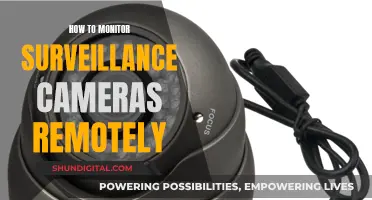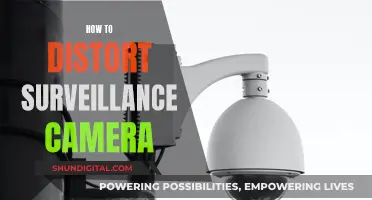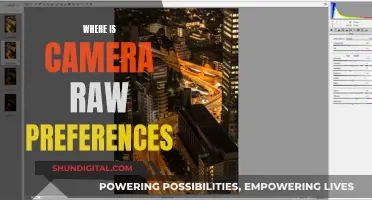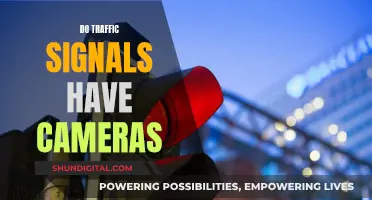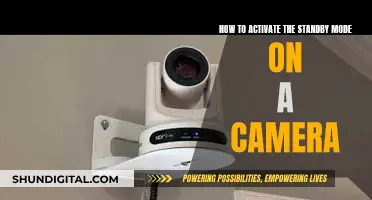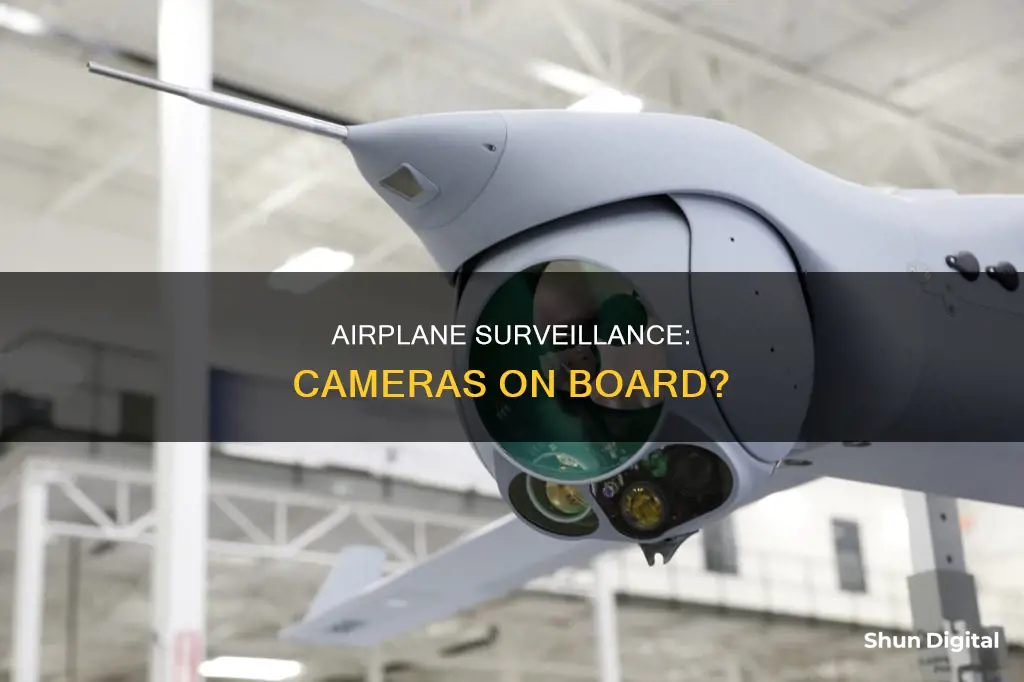
Do aeroplanes have surveillance cameras? It's a question that has piqued the curiosity of many passengers. The answer is yes, but it's complicated. While airlines have previously stated that cameras are not activated and have no plans to do so, the presence of these devices has sparked concerns about privacy and hacking. In this paragraph, we will delve into the insights provided by aviation experts and explore the potential benefits and drawbacks of these cameras.
| Characteristics | Values |
|---|---|
| Surveillance cameras inside airplanes | Surveillance cameras are installed inside some airplanes. |
| Surveillance cameras outside airplanes | Surveillance cameras are installed outside some airplanes. |
| Surveillance cameras in the cockpit | Surveillance cameras are installed inside the cockpit of some airplanes. |
| Surveillance cameras outside the cockpit | Surveillance cameras are installed outside the cockpit of some airplanes. |
| Surveillance cameras activation | Some surveillance cameras are not physically covered but are deactivated and cannot be activated onboard. |
| Surveillance cameras and privacy | Some passengers and experts are concerned about their privacy and recommend physically covering the cameras. |
What You'll Learn

Cameras can be used for video chats between passengers
While it is not common for airplanes to have surveillance cameras, some do. For example, Bruno Gilissen, a pilot with experience working on four different airlines, stated that "since 9/11, security measures dictate that the cockpit door has to remain closed and locked at all times during the flight, unless authorised persons enter or exit." The camera sends live images of the cockpit door area to the cockpit, allowing the pilot to see who is outside and prevent hijacking or anyone without proper clearance from entering. Additionally, some airlines have installed optional cabin cameras, providing the cockpit crew with a general view of the main body of the plane. However, these cabin cameras are not widely used, as Gilissen guesses that "most airlines don't have this option."
Beyond security purposes, cameras on airplanes can serve other functions as well. For example, Emirates Airlines has installed a camera on a portable tablet in its first-class suite. Using an app called Room Service, passengers can communicate with flight attendants and make requests without leaving their seats. The camera can only be enabled by the passenger, ensuring privacy when desired.
Another potential use for cameras on airplanes is video chats between passengers. This idea has been proposed by David Bartlett, chief technology officer for Panasonic, one of the biggest airline entertainment system manufacturers. Bartlett suggests that cameras could enable seat-to-seat or seat-to-ground video chats, providing passengers with interactive technology similar to what they use on the ground. However, the implementation of this idea has sparked concerns among passengers about privacy and the potential for disruption.
While video chats between passengers could offer a fun way to connect with others on the flight, there are several considerations to keep in mind. Firstly, not all airlines provide stable and high-quality internet access, which could lead to lags and interruptions during video calls. Additionally, the close quarters and noise interruptions inherent to airplane cabins could make it difficult to have a private and uninterrupted conversation.
In conclusion, while cameras on airplanes can have practical applications such as security and passenger service, using them for video chats between passengers may have limited success due to technological and privacy constraints. It is important to consider the potential benefits and drawbacks before implementing such a feature on a widespread scale.
Get Camera Raw Plugin for CS4 With These Steps
You may want to see also

They can monitor cabins for suspicious behaviour
Airplane cabins are equipped with cameras that can be used to monitor cabins for suspicious behaviour. While these cameras are not typically activated, they can serve as a valuable tool for flight attendants to maintain situational awareness and address any potential issues.
The presence of cameras in airplane cabins has raised concerns among passengers and aviation experts regarding privacy and the potential for spying. However, it's important to note that airlines have emphasised that these cameras are deactivated and they have no plans to activate them.
The cameras in the cabin can be used to monitor cabins for suspicious behaviour. This can help flight attendants identify any potential threats or incidents that may occur during the flight. For example, the cameras could help spot human trafficking or assault, acting as an extension of the air steward's eyes. Additionally, the cameras could be used to monitor the wellbeing of passengers, such as detecting if someone has become unwell.
In certain cases, the installation of cabin cameras is optional and may not be present on all flights. For instance, Bruno Gilissen, an airline pilot with experience working for four different airlines, stated, "An optional cabin camera can be installed as well, giving the cockpit crew a general view of what's happening in the back. My guess is that most airlines don't have this option."
While the primary purpose of cabin cameras is to enhance safety and security, there are also potential benefits for passengers. For instance, the cameras could enable features such as seat-to-seat video chats or motion-activated control of in-flight entertainment systems. However, the activation of such features would require explicit permission from passengers, addressing privacy concerns.
The Evolution of Photography: First Camera's Birth
You may want to see also

Cameras can be used to spot human trafficking or assault
Airlines have been under scrutiny for installing cameras on airplane seats, with many passengers and aviation experts concerned about their privacy and security. While airlines have assured that these cameras are deactivated and have no plans to activate them, some experts argue that they could be used for good purposes, such as spotting human trafficking or assault.
Human trafficking is a significant issue in airports, and aviation humanitarian groups like Airline Ambassadors International are working to address it. By training airport and airline staff to recognize and report suspicious behavior, they aim to prevent adults and children from being forced into labor or commercial sexual exploitation. Passengers can also play a crucial role by paying attention to their surroundings and reporting any suspicious activities to the authorities.
In-flight cameras could act as an extension of the air steward's eyes, monitoring cabins for any signs of human trafficking or assault. They could capture vital footage that can be used to identify and apprehend traffickers or assailants. Additionally, the cameras could help detect suspicious behaviors that may indicate human trafficking, such as a traveler with few or no personal items, inconsistent or scripted communication, or a lack of freedom of movement.
However, the use of in-flight cameras also raises concerns about hacking and privacy invasion. Aviation experts recommend physically covering the cameras to alleviate passenger worries. While airlines emphasize that the cameras are deactivated and require explicit permission for future use, passengers remain cautious about potential remote hacking and data theft.
The debate surrounding in-flight cameras continues, with advocates highlighting their potential to enhance security and address pressing issues like human trafficking. Opponents, meanwhile, express valid concerns about privacy and the potential for unauthorized access. As technology advances, finding a balance between harnessing its benefits and protecting personal privacy will be crucial.
Defringing in Camera Raw: A Step-by-Step Guide
You may want to see also

They can be used for seat-to-ground video chats
Airplane cabins are equipped with cameras, but these are typically not utilised for spying on passengers. These cameras are primarily used for safety and security reasons. For instance, cameras outside the cockpit help pilots monitor the area outside their cockpit door, which is essential for maintaining cockpit security.
In addition to security purposes, cameras can also be used for seat-to-ground video chats. This feature is part of a new generation of in-flight entertainment systems offered by Panasonic Avionics and Thales, the two largest airline entertainment system manufacturers. David Bartlett, Panasonic's chief technology officer, emphasised that these systems are designed to provide passengers with the same interactive technology they use on the ground.
While some airlines, like Emirates, have incorporated cameras into their first-class suites, allowing passengers to communicate with flight attendants through an app, the primary focus of this technology is on enhancing the passenger experience.
The use of cameras for seat-to-ground video chats can provide several benefits. Firstly, it enables passengers to have face-to-face conversations with people on the ground, making their travel experience more interactive and engaging. This can be especially useful for business travellers who need to stay connected with their colleagues or clients while travelling. Secondly, it can assist airlines in monitoring cabins for suspicious behaviour or identifying passengers who may require assistance, such as those who have become unwell during the flight.
However, it's important to address the concerns regarding privacy and potential hacking. Some aviation experts recommend physically covering the cameras to alleviate passenger worries about surveillance. Additionally, obtaining explicit permission from passengers before activating any camera-related features is crucial for maintaining trust and ensuring a comfortable travel experience.
Bing Camera Battery: What Powers These Devices?
You may want to see also

Airlines have no plans to activate the cameras
American Airlines, Qantas, and Emirates have all confirmed that the cameras on their planes are deactivated and that they have no plans to use them. Qantas further stated that they don't have the software needed to activate the cameras, even if they wanted to. Singapore Airlines, whose in-flight entertainment systems include embedded cameras, has also said that these cameras are deactivated and that they have no plans to enable or develop any features using them.
The Airline Passenger Experience Association (APEX), an airline trade group, has affirmed that American carriers with cameras have not made them operational. APEX also emphasizes that airlines only want to use cameras in the future with explicit passenger permission when technology has advanced to offer personalized service improvements.
Panasonic Avionics, a leading manufacturer of in-flight entertainment systems, has stated that they will never activate any feature within their systems without explicit direction from an airline customer. They also highlighted their commitment to passenger privacy, noting that they would work closely with airlines to educate passengers about the system and ensure compliance with privacy laws and regulations.
While some aviation experts and passengers have expressed concerns about the potential for spying and data theft, others argue that the presence of cameras could improve the in-flight experience and enhance security. Suggested uses for the cameras include facilitating video chats between passengers, monitoring cabins for suspicious behavior, and spotting human trafficking or assault. However, airlines have maintained their position of not activating the cameras, prioritizing passenger privacy and trust.
In summary, airlines have consistently communicated that they have no plans to activate the cameras installed on their aircraft. They have emphasized deactivation, a lack of enabling software, and a commitment to passenger privacy and trust. The decision to keep the cameras dormant appears to be a collective industry stance, with no indications of imminent activation or plans to utilize them in the foreseeable future.
Troubleshooting Camera Focus Issues on the Nikon D7500
You may want to see also
Frequently asked questions
Yes, in-flight entertainment systems often come with built-in cameras, although airlines claim that these cameras are deactivated and they have no plans to activate them.
If activated, seat cameras could be used for video chats between passengers, monitoring cabins for suspicious behaviour, and spotting human trafficking or assault.
Some passengers and aviation experts are concerned that built-in cameras could be used by airlines or third-party hackers to spy on passengers and steal data. Aviation consultant Peter Lemme suggests that there should be no chance of surveillance unless the passenger agrees to it.
Airlines have stated that they will not activate any camera without explicit direction from the airline customer. The Airline Passenger Experience Association (APEX) has also stated that its members are committed to obtaining advance explicit customer permission before using the cameras.


